Creating a Fairy Garden for the Kids
Welcome to the enchanting world of fairy gardens, a magical space where imagination takes flight and creativity blooms! If you’re looking for a delightful way to engage your children in gardening while sparking their creativity, then you’ve stumbled upon the perfect project. Fairy gardens are not just about planting; they are about crafting a whimsical universe that can transport your little ones to a land of magic and adventure. Imagine your kids wandering through their own tiny realm filled with charming plants, sparkling decorations, and playful fairy figurines! This article will guide you through the process of creating a fairy garden that will not only beautify your backyard but also ignite your children’s imaginations.
The beauty of fairy gardens lies in their versatility. You can create them in pots, in the ground, or even indoors if you’re short on space. The best part? There are no strict rules! Your fairy garden can reflect your children’s interests, whether they love dinosaurs, princesses, or even superheroes. By involving your kids in the planning and planting, you’ll not only teach them about gardening but also encourage them to express their unique creativity. So, grab your gardening gloves and let’s dive into the enchanting world of fairy gardens!
Before you start gathering materials and planting, it’s essential to choose the right location for your fairy garden. The perfect spot can make all the difference in how well your garden thrives and how much joy it brings to your kids. Here are some factors to consider:
- Sunlight: Most plants need plenty of sunlight to grow, so pick a spot that receives at least six hours of sunlight a day. However, if you’re using shade-loving plants, a partially shaded area will work wonders.
- Accessibility: Ensure the garden is easily accessible for your kids. They should be able to reach it without any obstacles, allowing them to play and tend to their garden freely.
- Aesthetics: Choose a location that is visually appealing. Whether it’s near a patio, under a tree, or in a corner of the yard, the garden should be a delightful sight that draws kids in.
Once you have found the ideal location, you’re ready to gather materials and start building your fairy paradise!
Now that you’ve selected the perfect spot, it’s time to gather the materials needed to create your fairy garden. Think of this as assembling your magical toolkit! Here’s what you’ll need:
- Soil: Good quality potting soil is essential for healthy plant growth.
- Plants: Choose a variety of plants that will thrive in your chosen location.
- Decorative Elements: This includes fairy figurines, miniature furniture, stones, and other whimsical accessories that will bring your garden to life.
With your materials in hand, you’re ready to create a whimsical environment that will captivate your children’s imaginations. Remember, the key to a successful fairy garden lies in the combination of nature and fantasy.
Selecting the right plants is crucial for enhancing the charm of your fairy garden. Here are some kid-friendly options that are easy to maintain and contribute to the magical atmosphere:
Miniature plants are a fantastic choice for fairy gardens as they add lush greenery without overwhelming the space. Consider using:
- Moss: Soft and velvety, moss creates a magical carpet that feels like a fairy's playground.
- Succulents: These hardy plants come in various shapes and sizes, making them perfect for adding character.
- Dwarf Varieties: Look for dwarf shrubs and flowers that maintain a small stature but pack a big punch in terms of color.
Incorporating flowers adds a burst of color and vibrancy to your fairy garden. Choose kid-safe options like:
- Pansies: These cheerful flowers come in various colors and are easy to grow.
- Marigolds: Bright and sunny, marigolds attract butterflies and add a lively touch.
- Snapdragons: Their unique shape and colors can spark curiosity and wonder.
With the right plants in place, your fairy garden will soon be a vibrant and inviting space for your children to explore.
Decorative elements are the finishing touches that can truly bring your fairy garden to life. Think of them as the icing on the cake! Accessories like fairy figurines, miniature furniture, and natural materials can create a captivating landscape. Here are some ideas:
- Fairy Figurines: These tiny figures can represent different fairy characters and add a sense of storytelling to your garden.
- Miniature Furniture: Tiny chairs, tables, and benches can create a cozy nook for your fairies.
- Natural Materials: Use twigs, stones, and bark to create pathways, bridges, or even a fairy house!
As your garden comes together, watch as your children's imaginations flourish. They will create stories, adventures, and magical moments right in their own backyard!
As you embark on this enchanting journey of creating a fairy garden, you might have some questions. Here are some frequently asked questions to help guide you:
- What type of container is best for a fairy garden? Any container that can hold soil and has drainage holes works well, such as pots, wooden boxes, or even old wheelbarrows!
- Can I create a fairy garden indoors? Absolutely! Just ensure you have adequate light and choose plants that thrive in indoor conditions.
- How often should I water my fairy garden? This depends on the plants you choose, but generally, check the soil moisture regularly and water when the top inch feels dry.
Creating a fairy garden is not just about gardening; it’s about nurturing creativity, sparking joy, and creating lasting memories with your children. So, roll up your sleeves, get your hands dirty, and let the magic unfold!
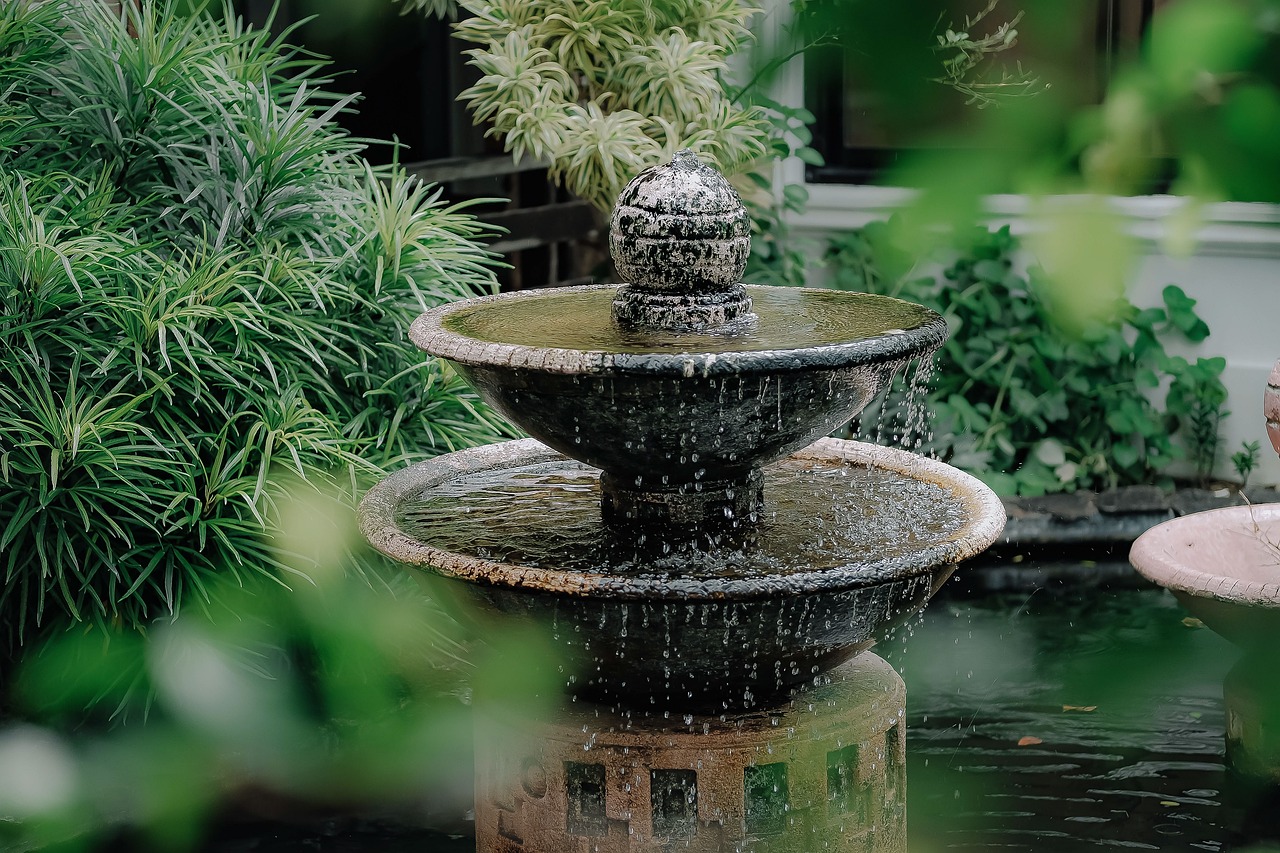
Choosing the Right Location
Creating a fairy garden is like crafting a little world of magic right in your backyard, but before you dive into the enchanting details, you need to think about where to set up this whimsical paradise. The location of your fairy garden is crucial, as it can significantly affect the health of your plants and the overall experience for the kids. Imagine a sunny spot where the light dances on the leaves, or a shaded nook that feels like a secret hideaway—both can offer unique vibes for your garden.
First and foremost, consider the sunlight. Most plants thrive in bright, indirect sunlight, so look for a spot that receives a good amount of light throughout the day. However, too much sun can scorch delicate plants, so a balance is key. You might want to observe how the sunlight moves across your yard throughout the day. If you find a spot that gets morning sun but is shaded in the afternoon, that could be a perfect location for your fairy garden.
Next up is accessibility. You want your fairy garden to be a place where kids can easily reach and play without any obstacles. Consider setting it up in an area that’s close to the house, where children can easily run out and immerse themselves in their magic-filled adventures. If the garden is too far away, it might become a forgotten patch of earth rather than the enchanting realm you envisioned.
Another important factor to think about is the aesthetics of the chosen location. Look for a spot that naturally complements the fairy garden theme. For instance, if you have a large tree or a rock formation nearby, it can serve as a beautiful backdrop. You might even want to incorporate these natural elements into your design. A tree can be the perfect place for a fairy treehouse, while rocks can become stepping stones or miniature hills. The more visually appealing your location, the more inviting it will be for kids and their imaginations.
Lastly, don’t forget about the environment around your chosen spot. Is it a safe area free from heavy foot traffic or potential hazards? You want to create a magical world without the worry of disturbances from pets or other outdoor activities. A quiet corner of the yard can provide the perfect sanctuary for both the fairy garden and the children who will play there.
In summary, the right location for your fairy garden is a blend of sunlight, accessibility, aesthetics, and safety. By taking the time to choose wisely, you’re setting the stage for countless adventures and a flourishing garden that will spark your children’s creativity and imagination.
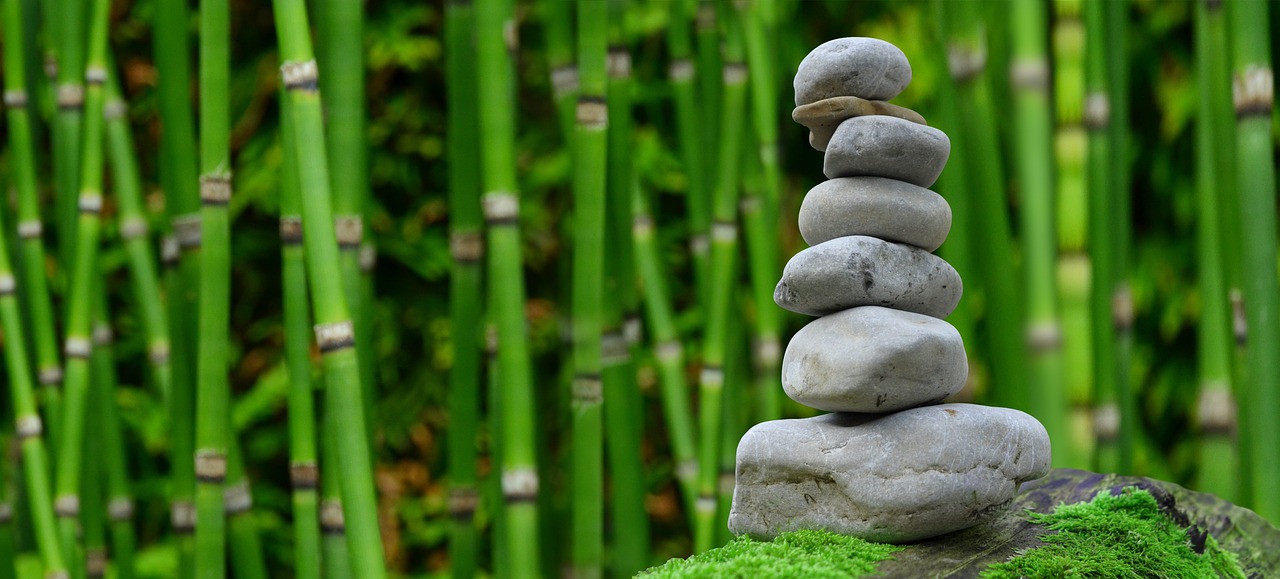
Gathering Materials
Creating a fairy garden is a delightful adventure that begins with gathering the right materials. Think of it as assembling the ingredients for a magical recipe! The first step is to gather your essentials, which will serve as the foundation for your enchanting space. You'll need quality soil to ensure your plants thrive, along with a selection of plants that not only look beautiful but are also safe for children. Additionally, don’t forget to include some decorative elements that can bring your garden to life.
When it comes to soil, opt for a good potting mix that retains moisture yet drains well. This will help your plants flourish while preventing water from pooling and harming their roots. As for plants, consider those that are not only visually appealing but also easy to care for. Some great choices include miniature varieties that fit perfectly into a fairy garden setting. You might want to think about incorporating some succulents, which are low maintenance and come in various shapes and colors, or moss, which adds a lush, green carpet effect.
Decorative elements are where your creativity can truly shine! Picture tiny fairy figurines, miniature furniture, and even small stones or twigs that can serve as pathways or borders. These items can spark your children’s imaginations and create a whimsical atmosphere. Here’s a quick list of materials you might consider:
- Soil: Potting mix for good drainage and moisture retention.
- Plants: Miniature succulents, moss, and kid-friendly flowers.
- Decorative Items: Fairy figurines, miniature furniture, stones, and twigs.
To make your fairy garden even more enchanting, think about incorporating natural materials you can find around your home or in your backyard. Items like pinecones, acorns, and small branches can add a rustic touch and blend seamlessly into the natural landscape of your fairy garden. You can even use recycled materials like bottle caps or old toys to create unique decorations that tell a story. Remember, the goal is to create a space that feels alive and inviting, so let your imagination run wild!
Once you have all your materials gathered, take a moment to visualize how you want your fairy garden to look. This is your chance to create a magical world that reflects your children’s personalities and interests. Whether it’s a garden full of vibrant flowers or a serene space with soft greenery, the possibilities are endless. So, roll up your sleeves and get ready to create a whimsical retreat that will captivate the hearts of your little ones!

Plants for Your Fairy Garden
Choosing the right plants for your fairy garden is like picking the perfect ingredients for a magical potion. The right selection not only enhances the visual appeal but also creates an enchanting atmosphere that sparks the imagination of children. When selecting plants, it's essential to consider their size, maintenance needs, and how well they fit into the whimsical theme of your garden. You want plants that are not just beautiful but also safe for kids to interact with. After all, a fairy garden is a playground for the imagination!
One of the most delightful aspects of fairy gardens is the variety of plants you can choose from. Miniature plants are particularly popular because they keep the garden's scale in check and add an element of charm. Consider using moss, which creates a soft, lush carpet that feels like a fairy's meadow. Succulents are another fantastic option; their unique shapes and colors can provide a stunning focal point in your garden. Dwarf varieties of traditional plants, like dwarf conifers, can also add height without overwhelming the space.
When it comes to flowers, incorporating vibrant blooms can transform your fairy garden into a kaleidoscope of colors. Look for kid-safe flower options like pansies, marigolds, and petunias. These flowers are not only beautiful but are also known to attract butterflies, adding an extra layer of enchantment to your garden. Imagine your children watching the butterflies flutter from flower to flower, their imaginations running wild with stories of fairies and magical creatures.
To give you a clearer idea of what to plant, here’s a simple table that outlines some fantastic plant choices for your fairy garden:
| Plant Type | Characteristics | Kid-Friendly? |
|---|---|---|
| Moss | Soft, lush ground cover | Yes |
| Succulents | Diverse shapes and colors, low maintenance | Yes |
| Dwarf Conifers | Adds height and greenery | Yes |
| Pansies | Bright, cheerful flowers | Yes |
| Marigolds | Vibrant colors, attracts pollinators | Yes |
| Petunias | Fragrant, colorful blooms | Yes |
By selecting a mix of these plants, you can create a fairy garden that not only looks stunning but is also a safe and engaging environment for your children. Remember, the goal is to create a space where imaginations can run wild, and every plant can tell a story. So, get ready to dig your hands into the soil, plant some seeds, and watch as your fairy garden comes to life!
1. What are the best plants for a fairy garden?
Some great options include moss, succulents, dwarf conifers, and kid-safe flowers like pansies and marigolds. These plants are visually appealing and safe for children to be around.
2. How much sunlight do fairy gardens need?
Most fairy gardens thrive in partial sunlight. It's best to select a location that receives a mix of sun and shade to keep your plants healthy and vibrant.
3. Can I use regular garden soil for my fairy garden?
Yes, regular garden soil can work, but it's often beneficial to mix in some potting soil to improve drainage and provide nutrients for your plants.
4. How can I keep my fairy garden engaging for kids?
Incorporating interactive elements like miniature furniture, fairy figurines, and even small pathways can keep the garden interesting and encourage imaginative play.
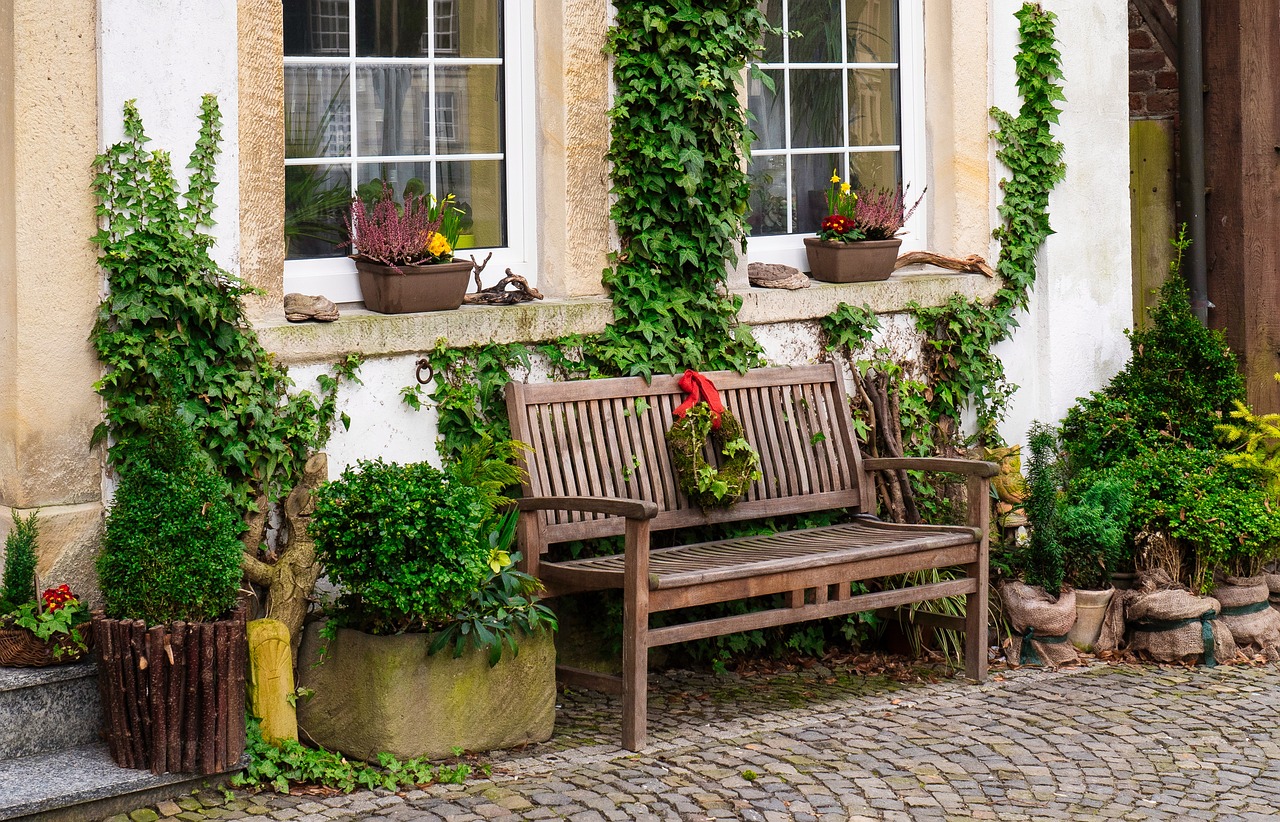
Miniature Plants
When it comes to crafting your enchanting fairy garden, play a pivotal role in creating that magical ambiance. These tiny treasures not only add a lush, green touch but also fit perfectly into the whimsical scale of your garden. Imagine a world where every leaf and petal is a potential home for fairies and other magical creatures! Miniature plants are like the jewels of your fairy garden, bringing life and vibrancy without overwhelming the space. So, what should you consider when selecting these petite plants?
First off, moss is a fantastic choice. It acts like a soft, green carpet that covers the ground, creating a lush backdrop for all other elements. Not only is it easy to maintain, but it also thrives in shaded areas, making it ideal for those nooks in your garden where sunlight may be limited. Another great option is succulents. These hardy little plants come in various shapes and colors, adding texture and visual interest. Plus, they require minimal watering, which is perfect for busy parents and kids who might forget to tend to their garden regularly.
But wait, there’s more! You might also want to consider dwarf varieties of traditional plants. For instance, dwarf conifers can provide an evergreen element that adds depth and character to your garden. These little wonders can be shaped into delightful topiaries, making them not only plants but also living sculptures. It's like having a tiny forest right in your backyard!
Here’s a quick overview of some miniature plants that can elevate your fairy garden:
| Plant Type | Characteristics | Care Level |
|---|---|---|
| Moss | Soft, lush carpet; ideal for shaded areas | Low |
| Succulents | Variety of shapes and colors; drought-resistant | Very Low |
| Dwarf Conifers | Evergreen; can be shaped into topiaries | Medium |
Incorporating these miniature plants into your fairy garden not only enhances its visual appeal but also encourages kids to engage with nature. They can learn about different plant types, their care, and the importance of nurturing living things. It’s a delightful way to combine play with education, making your fairy garden not just a magical escape but also a learning experience.
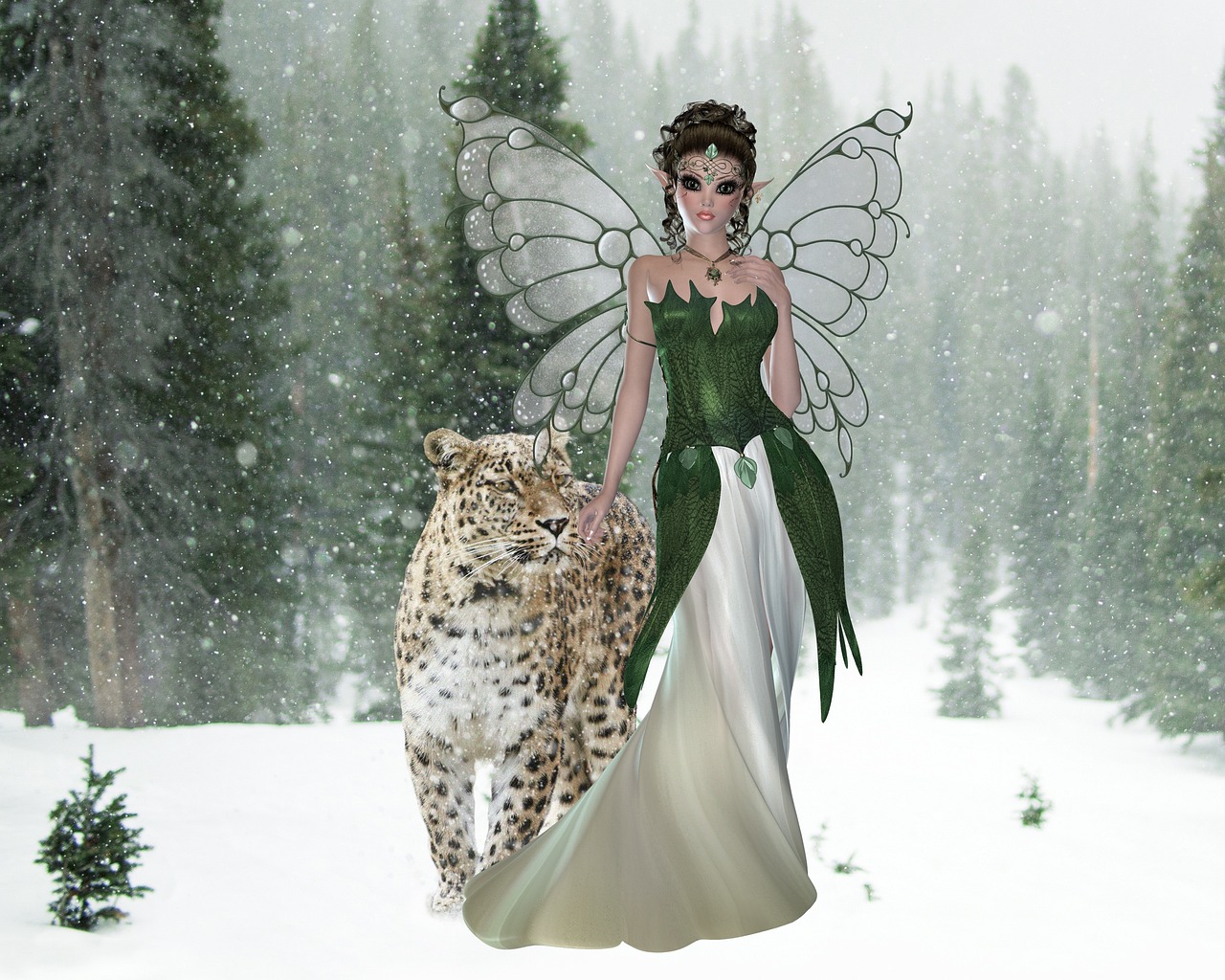
Flower Options
When it comes to creating a fairy garden, incorporating flowers is like adding the final brush strokes to a masterpiece. Not only do they bring a burst of color and life, but they also attract butterflies and other pollinators, enhancing the magical atmosphere that every child dreams of. Choosing the right flowers is essential, especially when considering the safety of little ones who may be tempted to touch or even taste the blooms. Here are some fantastic flower options that are both kid-friendly and visually stunning:
One of the most popular choices for fairy gardens is the pansy. These charming flowers come in a variety of vibrant colors and have a delightful, cheerful appearance. Their low-growing nature makes them perfect for small spaces, and they are known to bloom in early spring, providing a splash of color just when you need it. Another excellent option is the marigold, which is not only bright and cheerful but also known for its pest-repelling properties. This means you can enjoy the beauty of your garden while keeping pesky bugs at bay!
For a touch of whimsy, consider adding snapdragons. These flowers have a unique shape that resembles tiny dragon mouths, making them a favorite among children. They come in various heights, so they can create visual interest in your garden. Additionally, cosmos are a fantastic choice; they are easy to grow, require minimal care, and their delicate petals sway beautifully in the breeze, creating a magical scene that captures the imagination.
It's important to remember that while selecting flowers, you should also consider the growing conditions of your fairy garden. Some flowers thrive in full sun, while others prefer partial shade. To help you make the best choices, here's a simple table outlining a few popular flower options along with their sunlight requirements:
| Flower | Sunlight Requirement | Height |
|---|---|---|
| Pansy | Partial to Full Sun | 6-12 inches |
| Marigold | Full Sun | 8-18 inches |
| Snapdragon | Full Sun | 12-36 inches |
| Cosmos | Full Sun | 12-48 inches |
By carefully selecting flowers that not only fit the aesthetic of your fairy garden but also thrive in your local climate, you can create a vibrant and enchanting space that encourages children to explore, imagine, and play. Remember, the best fairy gardens are those that spark joy and creativity, allowing children to engage with nature in a fun and safe way. So, go ahead and let your imagination run wild—after all, every fairy garden deserves a touch of floral magic!
Q: Can I use any type of flower in a fairy garden?
A: While many flowers are suitable, it's best to choose non-toxic, kid-friendly varieties that are easy to maintain.
Q: How much sunlight do fairy gardens need?
A: The amount of sunlight depends on the plants you choose. Most flowers prefer full sun, but some can thrive in partial shade.
Q: How often should I water my fairy garden?
A: Watering needs vary by plant type, but a general rule is to keep the soil moist but not soggy. Check the soil regularly!
Q: Can I add decorative elements to my fairy garden?
A: Absolutely! Miniature furniture, fairy figurines, and natural materials can enhance the whimsical feel of your garden.
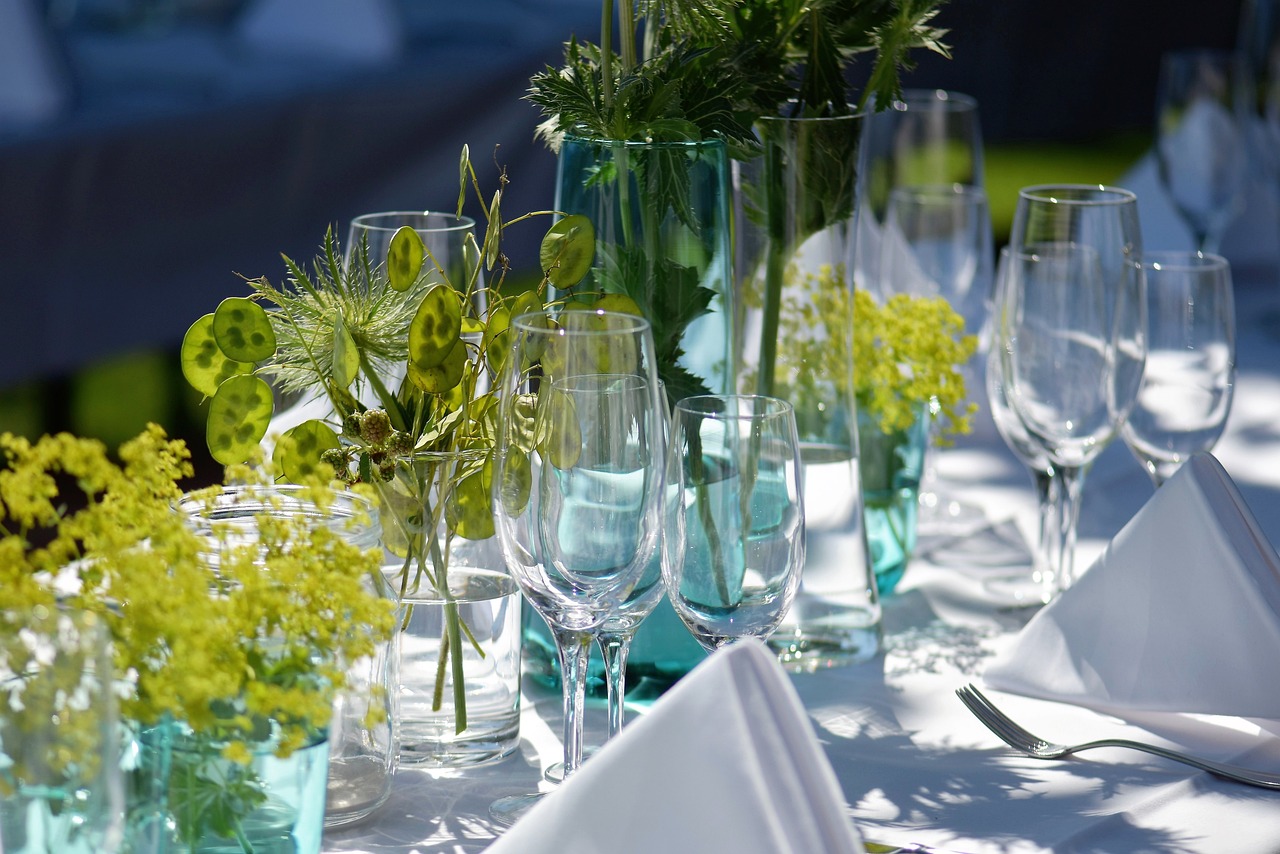
Decorative Elements
When it comes to creating a fairy garden, the you choose can truly make or break the magical atmosphere you're trying to cultivate. Think of your fairy garden as a stage where tiny characters come to life; every piece you add contributes to the overall story. You can start by incorporating fairy figurines that represent different characters or scenes. These can be anything from a whimsical fairy lounging on a mushroom to a tiny gnome tending to his garden. The more diverse your figurine collection, the richer the stories your children can create!
Next, consider adding miniature furniture to your garden. Tiny benches, tables, and even swings can create a cozy atmosphere that invites imaginative play. You might find these items in craft stores or even make them at home using twigs and stones. Imagine your child’s delight as they set up a tea party for their fairy friends, complete with tiny treats made from pebbles and leaves!
Natural materials can also enhance the charm of your fairy garden. Stones, twigs, and pinecones can serve as pathways, fences, or even miniature houses. For instance, a cluster of small stones can form a rustic pathway leading to a cozy fairy cottage. You can even use a hollowed-out log as a fairy home, giving your garden a natural, organic feel. The beauty of using natural materials is that they blend seamlessly into the garden, making it feel alive and inviting.
Lighting is another essential decorative element that can transform your fairy garden into a magical haven, especially at dusk. Consider adding solar-powered fairy lights or tiny lanterns that twinkle like stars. These lights can create an enchanting glow that captivates both children and adults alike. Imagine how wonderful it would be for your kids to play in a softly lit garden, where every corner holds a new surprise!
Lastly, don’t forget about the plants themselves. While they are functional, they can also serve as decorative elements. Colorful flowers can act as vibrant backdrops, while lush greenery can provide a sense of depth and texture. When selecting plants, think about how they will interact with your decorative pieces. For example, a flowering plant can frame a fairy figurine beautifully, drawing attention to it and enhancing the overall aesthetic of the garden.
In summary, the decorative elements in your fairy garden are not just accessories; they are the ingredients that bring your magical world to life. By thoughtfully selecting fairy figurines, miniature furniture, natural materials, and lighting, you can create an enchanting space that inspires creativity and imaginative play in your children.
- What types of plants are best for a fairy garden? Look for miniature plants, succulents, and kid-safe flowers that are easy to maintain.
- How can I make my fairy garden more interactive for kids? Incorporate movable pieces, like miniature swings or benches, and encourage storytelling with figurines.
- Is it okay to use artificial decorations? Yes, as long as they are safe for children and blend well with the natural elements of the garden.
- How often should I water my fairy garden? It depends on the plants you choose, but generally, check the soil moisture regularly to keep your plants healthy.
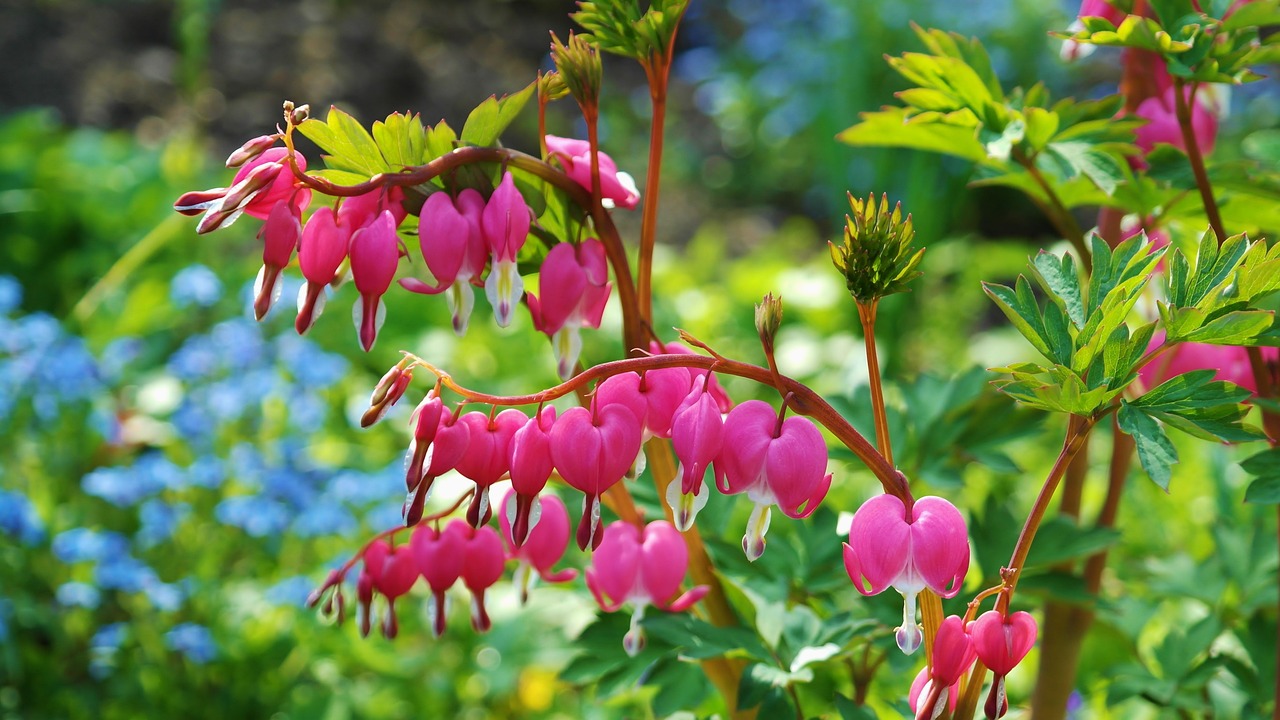
Designing Your Fairy Garden
Designing the layout of your fairy garden is not just about placing a few plants in a pot; it’s about crafting a magical world that invites children to explore and imagine. Picture this: a tiny realm where fairies flit about, where every pebble and leaf tells a story. To create such a captivating space, you need to think about the arrangement of plants, decorative elements, and how these components work together to create an inviting atmosphere. Start by envisioning the overall theme and feel of your garden. Do you want it to resemble a mystical forest, a sunny seaside, or perhaps a whimsical village? The theme you choose will guide your design decisions, making it easier to select plants and decorations that complement each other.
One of the first steps in your design journey is to consider the layout. A well-thought-out layout can make your garden feel larger and more engaging. Think of your garden as a stage, where each element plays a role in the performance of imagination. You might want to create different zones within your garden, such as a cozy nook with a miniature bench for fairies to rest or a vibrant flower patch that attracts butterflies. By using varying heights and textures, you can create a visual feast that draws the eye and encourages kids to explore every corner. For instance, taller plants can provide a backdrop, while shorter ones can fill in the foreground, creating depth and interest.
Another key aspect of your garden's design is the incorporation of pathways. Pathways can guide little explorers through the garden, making it feel like a journey into a fairy-tale world. You can use natural materials like small stones, gravel, or even bark to create these paths. Not only do they serve a practical purpose, but they also add to the aesthetic appeal. Imagine a winding path that leads to a hidden fairy door or a tiny pond. This element of surprise can be incredibly exciting for children, as they discover new features as they navigate the garden.
Don't forget to consider the scale of your decorations and plants. Everything should feel proportional and harmonious. For instance, if you have a large fairy figurine, it might overshadow smaller plants, so balance is essential. You can create a miniature landscape by mixing larger decorative items with smaller plants. This contrast can help highlight specific areas of the garden, making them focal points that spark curiosity and imagination.
Lastly, think about how you can incorporate themes into your garden design. Themes add a unique touch and can inspire storytelling and imaginative play. For example, if you choose a seaside theme, consider adding miniature seashells, beach chairs, and even a tiny lighthouse. Alternatively, an enchanted forest theme might include fairy houses, toadstools, and woodland creatures. The possibilities are endless! By creating a cohesive theme, you not only enhance the visual appeal but also encourage children to engage with the garden in a playful and creative way.
- What types of plants are best for a fairy garden? Look for small, colorful, and easy-to-maintain plants like succulents, moss, and dwarf flowers that will thrive in your chosen environment.
- How can I make my fairy garden more interactive for kids? Incorporate elements like pathways, miniature furniture, and themed decorations to encourage exploration and imaginative play.
- Can fairy gardens be created indoors? Absolutely! You can create a beautiful indoor fairy garden using pots, terrariums, or even glass containers.
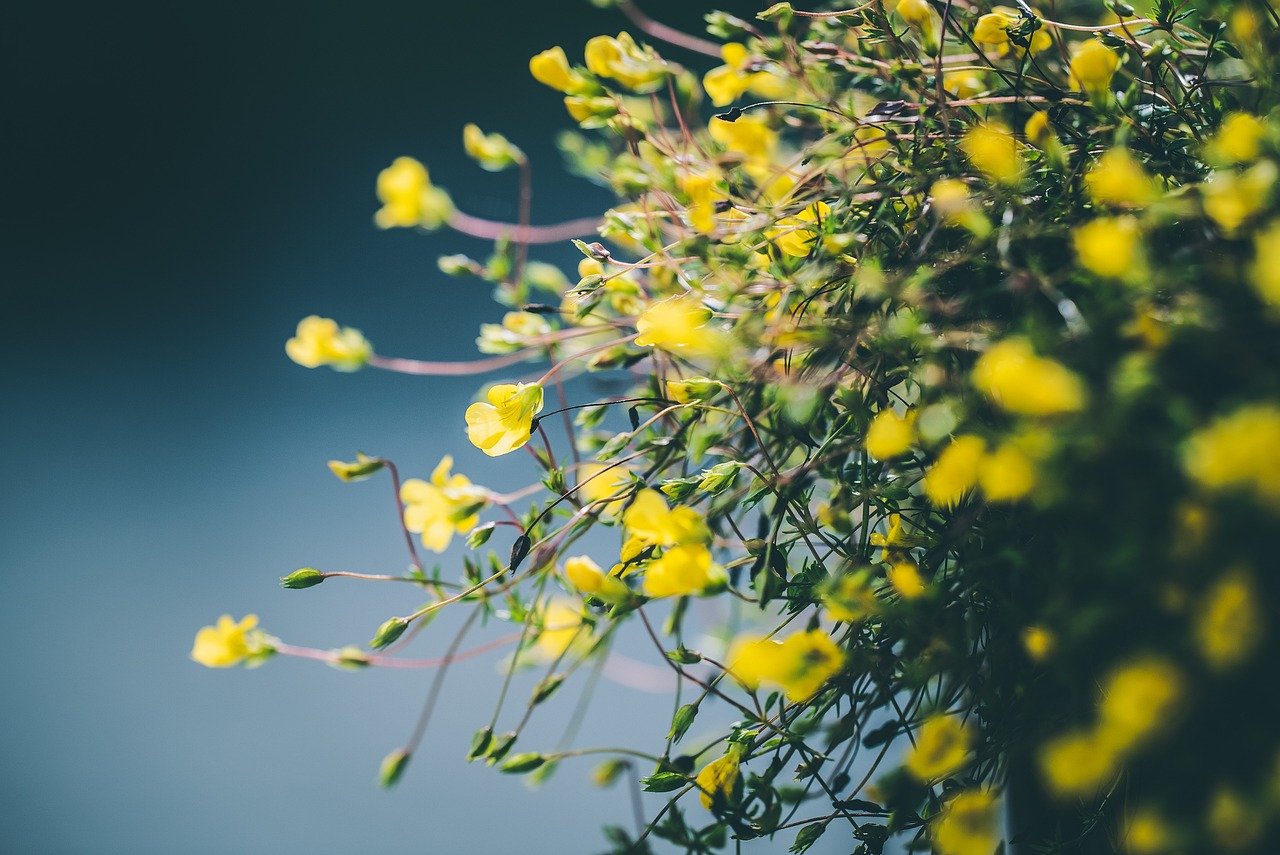
Creating Pathways
When it comes to designing your fairy garden, is like laying down the yellow brick road to a world of imagination and adventure. Pathways not only guide the eye but also invite little ones to explore every nook and cranny of their magical space. Think of them as the veins of your garden, connecting the heart of the garden to its enchanting corners. But how do you go about crafting these whimsical trails? Here are some ideas to get those creative juices flowing!
First, consider the materials you want to use for your pathways. The beauty of fairy gardens is that they can be as unique as the children who play in them. You might opt for natural stones that blend seamlessly with the environment, or perhaps you want to use colored pebbles that pop against the greenery. If you're feeling crafty, you could even create a pathway from wood slices or old bricks, giving your garden a rustic charm. The key is to choose materials that not only look good but are also safe for kids to navigate.
Next, think about the design of your pathways. A winding path can create a sense of mystery and adventure, while a straight path might suggest a more direct journey to a fairy castle or a magical pond. You can even incorporate curves and turns to mimic the natural flow of a forest trail. Remember, pathways can be as simple or as intricate as you like. A few well-placed stones can create a lovely effect, while a more elaborate design might include
- Curved edges
- Bridges over miniature streams
- Twinkling lights along the sides
Moreover, consider the size of your pathways. They should be wide enough for little feet to explore comfortably but not so wide that they take away from the intimate feel of the garden. A good rule of thumb is to make pathways about 12 to 18 inches wide. This size allows children to walk side by side, fostering shared adventures and conversations as they discover the wonders of their fairy garden together.
Lastly, don’t forget to incorporate elements that encourage exploration. Small signs pointing to different areas of the garden, tiny benches for fairy picnics, or even miniature gates can add layers of intrigue and excitement. These elements not only beautify the space but also serve as conversation starters and inspire storytelling among children. Imagine a child discovering a tiny sign that reads “Fairy Pond Ahead” and feeling the thrill of adventure! It’s these little touches that turn a simple garden into a magical realm.
In summary, creating pathways in your fairy garden is all about blending aesthetics with functionality. By choosing the right materials, designing inviting trails, and adding elements that spark curiosity, you can transform your garden into a captivating space that fuels creativity and imagination. So grab those stones, lay down those paths, and let the adventures begin!
Q1: What materials are best for creating pathways in a fairy garden?
A1: Natural stones, colored pebbles, wood slices, and old bricks are all excellent choices for creating enchanting pathways. Choose materials that blend well with your garden's aesthetic and are safe for children.
Q2: How wide should the pathways be?
A2: Pathways should generally be about 12 to 18 inches wide, allowing enough space for children to walk comfortably, explore, and engage with the garden.
Q3: Can I incorporate lighting into my fairy garden pathways?
A3: Absolutely! Twinkling lights or solar-powered fairy lights can add a magical glow to your pathways, making the garden enchanting even at night.
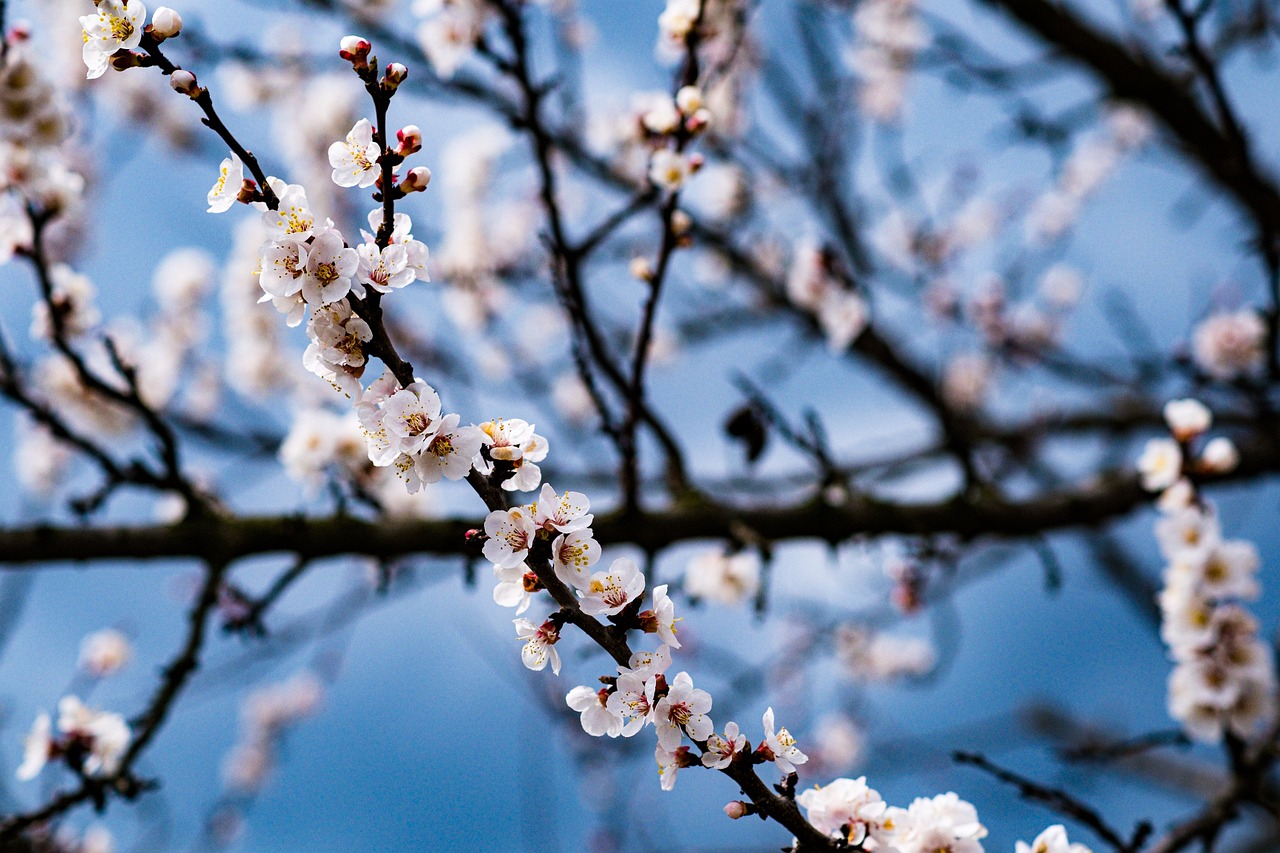
Incorporating Themes
When it comes to creating a fairy garden, incorporating a theme can transform a simple patch of soil into a vibrant world of imagination and storytelling. Think of your fairy garden as a stage, where every element plays a role in the enchanting tale you want to tell. By choosing a specific theme, you can guide your children’s creativity and make the gardening experience even more magical.
There are countless themes to explore, each offering a unique twist to the fairy garden experience. For instance, an enchanted forest theme can be brought to life with lush greenery, tiny woodland creatures, and fairy figurines peeking from behind moss-covered rocks. On the other hand, a seaside adventure theme can feature miniature beach chairs, tiny shells, and vibrant blue plants that mimic the ocean waves. This not only creates a visually stunning garden but also encourages children to dive into their imaginations.
To help you brainstorm, here are a few popular themes that can spark creativity:
- Magical Castle: Incorporate miniature castles, knights, and princesses to create a royal atmosphere.
- Under the Sea: Use blue stones, seashells, and aquatic plants to craft an underwater paradise.
- Garden of Dreams: Include whimsical elements like dream catchers, fairy lights, and soft pastel flowers.
- Wild West: Create a cowboy-themed garden with tiny cacti, horses, and rustic decorations.
As you choose a theme, consider involving your children in the decision-making process. Ask them what stories they love or what adventures they dream of. This not only makes the project more personal but also fosters a sense of ownership and excitement. You can even organize a mini brainstorming session where everyone pitches their ideas and you collectively decide on a theme.
Once the theme is selected, the next step is to gather the necessary materials that align with your chosen concept. For example, if you go with the enchanted forest theme, look for decorative elements like fairy houses made of bark, miniature animals, and plants that resemble forest foliage. On the flip side, for a beach theme, you might want to find sandy-colored stones, shells, and bright flowers that mimic tropical blooms.
Finally, remember that the beauty of a themed fairy garden lies in its ability to evolve. As your children grow and their interests change, so can the theme of the garden. You can easily add or swap out elements to keep the magic alive and relevant to their current passions. This adaptability not only keeps the garden fresh but also provides ongoing opportunities for creativity and play.
Frequently Asked Questions
- What is a fairy garden?
A fairy garden is a miniature garden that incorporates small plants, decorative items, and often fairy figurines to create a magical, whimsical environment. It's a delightful way for children to engage in gardening while sparking their imagination and creativity.
- Where should I place my fairy garden?
Choosing the right location is essential for your fairy garden's success. Look for a spot that receives adequate sunlight, is easily accessible for kids, and adds to the overall aesthetics of your yard or home. A place near a window or in a sunny corner of the garden can work beautifully!
- What materials do I need to create a fairy garden?
To create a fairy garden, you'll need soil, a container or designated area, plants (like miniature plants and kid-friendly flowers), and decorative elements such as fairy figurines, small furniture, and natural materials like stones and twigs. Gather a mix of items to create a vibrant and engaging space!
- What types of plants are best for a fairy garden?
Consider using miniature plants like moss, succulents, and dwarf varieties that are easy to maintain and add charm. Kid-safe flowers that attract butterflies, such as marigolds or pansies, can also enhance the magical atmosphere and make the garden lively!
- How can I design my fairy garden?
Designing your fairy garden involves arranging plants and decorations thoughtfully. Create pathways using pebbles or small stones to guide the eye, and incorporate themes like enchanted forests or seaside adventures to inspire storytelling and imaginative play for your kids.
- Can I change the theme of my fairy garden?
Absolutely! One of the best parts about fairy gardens is their flexibility. You can change the theme based on the seasons, holidays, or your child's interests. Whether it's a winter wonderland or a summer beach scene, let your creativity flow!



















